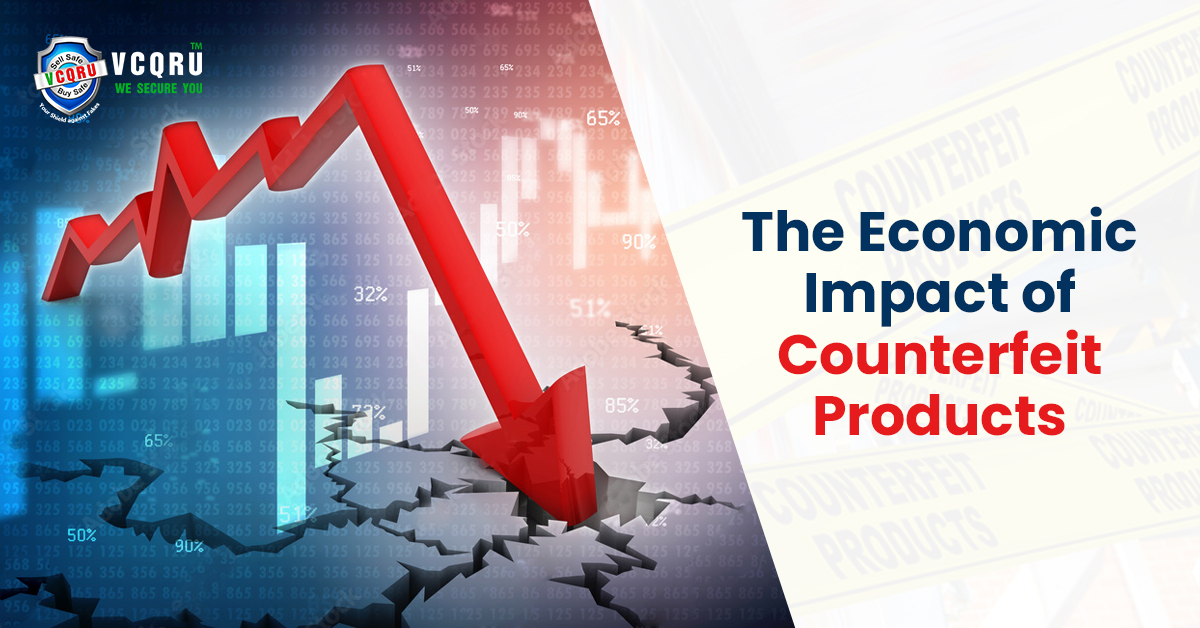

In today's global marketplace Counterfeit products have permeated and presented a multifaceted challenge not only to businesses but to entire economies. Beyond the immediate implications for brand integrity and consumer safety, the economic impact of counterfeit goods extends into various sectors, affecting businesses, consumers, and governments alike.
In 2019, the pharmaceutical industry grappled with the widespread circulation of counterfeit medications, particularly in developing countries. These counterfeit drugs not only undermined public health efforts but also led to loss of trust in healthcare systems.
The fashion industry, especially luxury brands, faces a constant battle against counterfeiters who flood the market with imitation handbags, watches, and clothing. In 2018, French luxury brand Louis Vuitton estimated its annual loss due to counterfeiting at around €30 million.
The automotive sector has also been a target for counterfeiters. In 2020, the European Union Intellectual Property Office (EUIPO) reported that the automotive parts industry lost approximately €2.4 billion annually due to counterfeit products, impacting both revenue and consumer safety.
Trust is the bedrock of any economy. When consumers unknowingly purchase counterfeit products pose substantial risks to consumer safety and erode trust in brands, leading to reputational damage and legal liabilities for businesses. This erosion of trust can have far-reaching consequences, affecting consumer spending patterns and brand loyalty.
Example:Counterfeit automotive parts, such as brake pads and airbags, jeopardize vehicle safety and expose consumers to life-threatening risks. Inadequate quality control and substandard materials used in counterfeit products compromise vehicle performance, highlighting the critical importance of combating counterfeit goods to safeguard consumer welfare.
Counterfeit products undermine the integrity of legitimate brands, diluting their value proposition and eroding consumer trust. When counterfeit goods flood the market, consumers become wary of purchasing even authentic products from the affected brand, leading to a decline in sales and market share. For example, luxury fashion houses such as Louis Vuitton and Gucci have long battled against counterfeiters, whose imitation products not only diminish the exclusivity of their brands but also siphon revenue away from genuine products.
Example:A luxury fashion brand might lose millions in revenue when counterfeit versions flood the market, undercutting their pricing and tarnishing their brand reputation.
The proliferation of counterfeit goods results in significant revenue losses for legitimate businesses and governments. Moreover, counterfeiters often operate outside the purview of taxation, evading tariffs and duties that legitimate businesses must adhere to. This dual impact exacerbates the economic strain, depriving governments of tax revenue that could be allocated towards public services and infrastructure development.
Example:A study by the OECD estimated that the global trade in counterfeit and pirated goods amounted to nearly $509 billion in 2016, depriving governments of tax revenue and stifling economic growth.
In the pharmaceutical sector, counterfeit medications pose a grave threat to public health and safety while siphoning revenue away from legitimate drug manufacturers. This not only undermines research and development efforts but also strains healthcare systems, necessitating increased regulatory measures to combat the proliferation of fake drugs
Counterfeiting stifles innovation and hampers investment in research and development (R&D). When counterfeiters replicate products without shouldering the costs of innovation, legitimate businesses face diminished incentives to invest in R&D, jeopardizing technological advancement and stifling economic progress. This phenomenon is particularly pronounced in industries reliant on intellectual property rights, such as pharmaceuticals and technology.
Example:The proliferation of counterfeit pharmaceuticals not only endangers public health but also disincentivizes pharmaceutical companies from investing in the development of life-saving drugs.
The prevalence of counterfeit products stifles innovation and deters investment in research and development (R&D) across various industries. Genuine manufacturers may hesitate to allocate resources towards innovation if counterfeiters can quickly replicate their products without bearing the associated costs. Consequently, this dampens technological advancement and impedes economic growth in the long term.
Example:The electronics industry faces significant challenges due to counterfeit electronic components infiltrating supply chains. These counterfeit components, often of inferior quality, compromise the reliability and safety of electronic devices, discouraging investment in cutting-edge technologies and impeding progress towards innovation-driven economies.
Counterfeit products disrupt established supply chains, leading to inefficiencies and increased operational costs for legitimate businesses. For instance, a company producing authentic goods may find itself competing with counterfeiters who offer similar products at lower prices. This undermines the competitive advantage of genuine manufacturers and distorts market dynamics. As a result, businesses may face reduced profitability and investment reluctance due to uncertain market conditions.
Example:The fashion industry, plagued by counterfeit luxury goods, experiences disruptions in its supply chain as counterfeiters illegally replicate popular designs. This not only compromises the integrity of renowned brands but also erodes consumer trust in authentic products.
The consequences of using counterfeit health products may extend beyond immediate health concerns, manifesting as long-term health risks and complications. Chronic conditions resulting from counterfeit medications or supplements can lead to ongoing health issues, reduced quality of life, and increased healthcare costs. Additionally, delayed or ineffective treatment due to counterfeit products may allow diseases to progress unchecked, leading to irreversible damage and poorer prognosis.
In the event that consumers suffer harm or financial loss due to counterfeit products, they have the right to seek redress and compensation for damages. However, the complex nature of counterfeit trade makes it challenging for consumers to hold counterfeiters accountable and seek restitution for any harm suffered. This may involve seeking refunds, product replacements, or legal recourse against the parties responsible for manufacturing or distributing the counterfeit goods.
Counterfeiting often serves as a lucrative enterprise for organized crime syndicates, providing a source of funding for illicit activities ranging from drug trafficking to terrorism. The clandestine nature of counterfeit operations enables criminal networks to thrive with impunity, undermining the rule of law and perpetuating social instability. Moreover, the profits reaped from counterfeit goods may fuel further criminal endeavors, exacerbating the socioeconomic costs of illicit trade.
Example:The Interpol reports that counterfeit goods are increasingly linked to transnational organized crime, posing a formidable challenge to law enforcement agencies worldwide.
The economic impact of counterfeit products goes beyond mere financial losses. As legitimate businesses suffer, they are forced to cut costs, often leading to layoffs and job displacement. Consider the case of a small-scale artisanal workshop that produces handcrafted goods. When counterfeit versions flood the market, demand for authentic products dwindles, putting the livelihoods of artisans and workers at risk.
Beyond economic implications, counterfeit products can pose serious health and safety risks to consumers. From counterfeit pharmaceuticals lacking active ingredients to fake electronics prone to malfunctioning, the consequences can be dire.
Example:Counterfeit automotive parts may fail to meet safety standards, leading to accidents and fatalities.
The economic impact of counterfeit products transcends mere monetary losses, permeating through supply chains, innovation ecosystems, and consumer trust. Addressing this multifaceted challenge requires concerted efforts from governments, businesses, and consumers alike. By fostering collaboration, implementing stringent regulations, and raising awareness, we can strive towards a marketplace built on authenticity, innovation, and trust.
For any queries feel free to contact us and our expert support team will get back to you as soon as possible!

A unique online presence is a key factor for magnified business growth. In today’s era where 85% of the population uses social media, your brand, and your business must be able to connect with your target audience in no time. Online marketing strategy is referred to advertising delivered through digital channels to promote brands and connect potential customers using the internet and other forms of digital communication.
April 10, 2023You may need to provide clients a cause to keep buying from you on occasion, stirring your pot of profits. Businesses provide special discounts to clients who make frequent purchases in order to promote customer loyalty. This well-executed art is known as a loyalty programme.
Mar 15, 2023Pipeline Construction is a dynamic industry that continues to grow and
SEPTEMBER 26, 2019